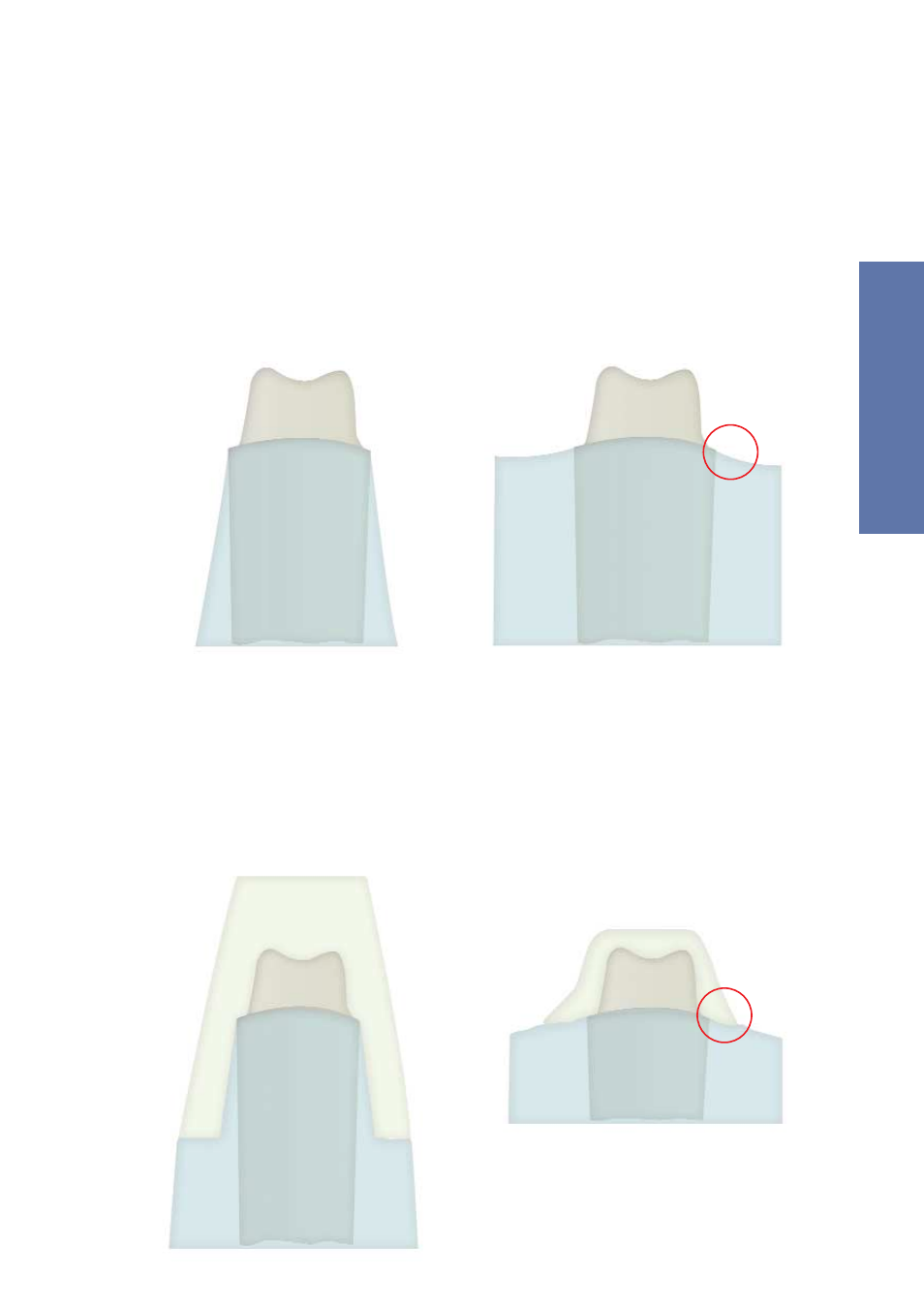Designing the silicone matrix – Ivoclar Vivadent Vectris User Manual
Page 21

21
WORKING
PROCEDURE
1. Designing the silicone matrix
If the silicone matrix (laboratory silicone and Transil) has been shaped correctly, the work required to finish the Vectris
framework is reduced to a minimum.
Single crowns without Transil
For single crowns, always adapt the laboratory silicone (Sil-Tech) to the die in a conical shape and adapt precisely to the
preparation margin. This method ensures that the Vectris Single effectively adapts to the cervical area during the vacuum-
forming process. If the silicone forms a shoulder, Vectris Single cannot adapt properly to the margin. The result is thick
cervical margins. Such margins would need to be removed mechanically after the vacuum-forming process.
correct
incorrect
Single crowns with Transil
It is advisable to first apply a layer of laboratory silicone (Sil-Tech), form it into a conical shape and then cut a shoulder
about 1 cm down from the preparation margin in order to support the following Transil matrix. If necessary, retention
grooves may be cut into the silicone (Sil-Tech). Next, separate the laboratory silicone with a thin layer of Vaseline and apply
Transil. The Transil matrix should be 3 to 6 mm thick to exhibit adequate stability.
correct
incorrect
